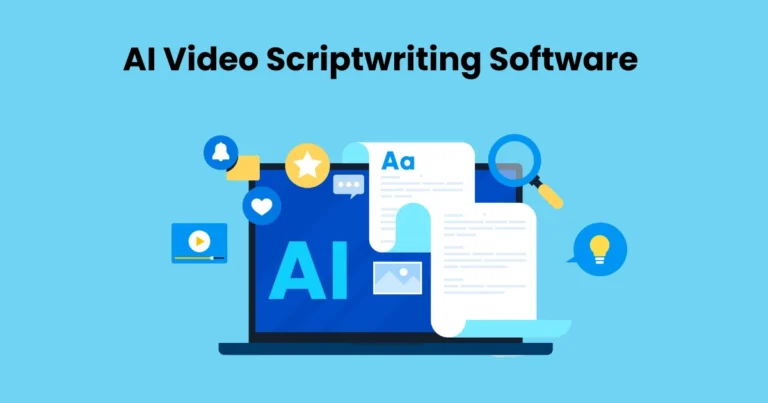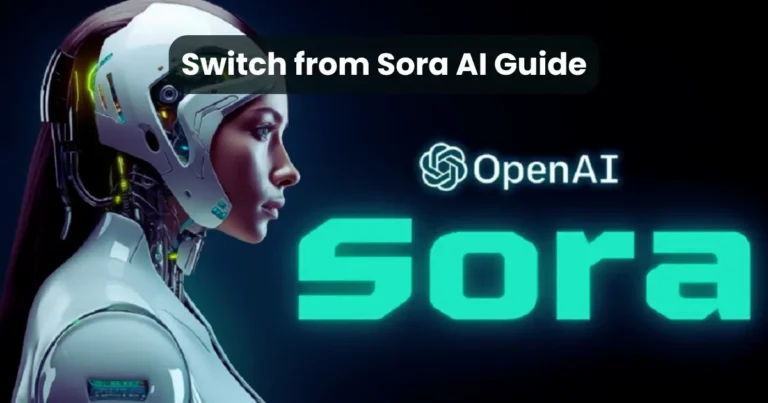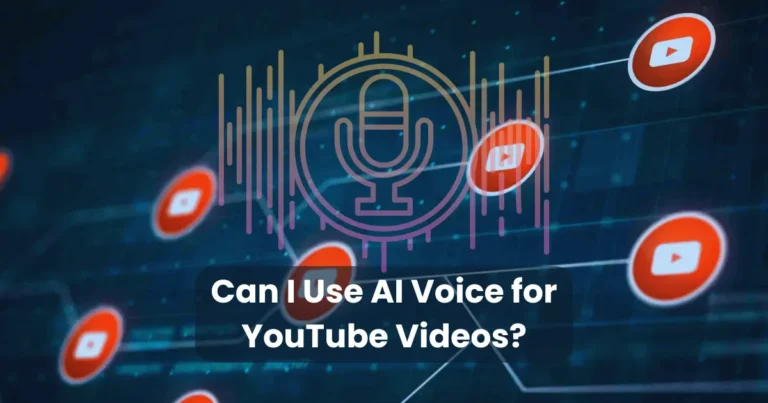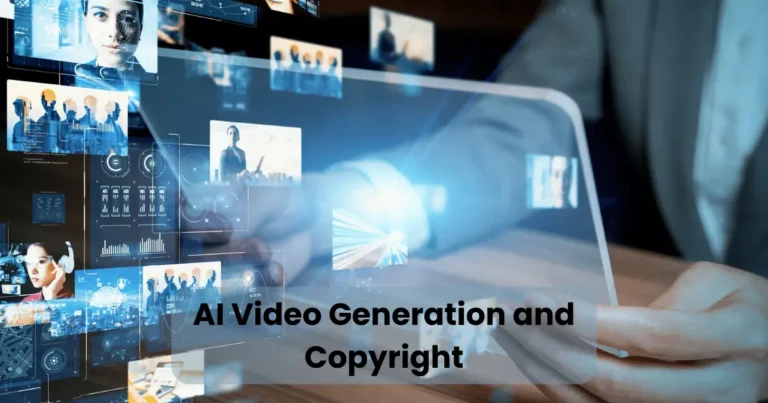The Evolution of AI in Video Technology
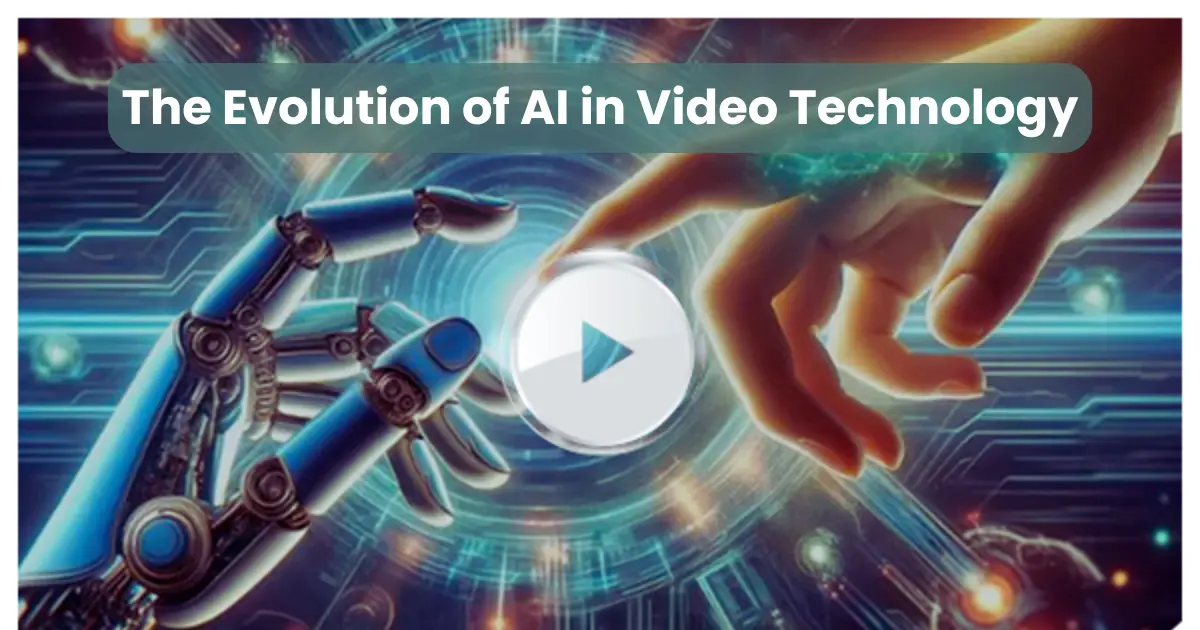
Contents
- 1 What Is AI in Video Technology?
- 2 Early Days: Video Processing Before AI
- 3 The Rise of Machine Learning in Video
- 4 AI in Video Editing and Post-Production
- 5 Facial Recognition and Real-Time Analysis
- 6 AI-Generated Content: From Deepfakes to Digital Humans
- 7 AI in Video Surveillance and Security
- 8 AI for Content Recommendation Engines
- 9 Live Streaming Enhancements with AI
- 10 AI in Virtual Reality and Augmented Reality
- 11 Future of AI in Video Technology
The evolution of AI in video technology has fundamentally reshaped how we produce, edit, analyze, and engage with visual content. From enhancing video quality to automating entire production pipelines, artificial intelligence has become a driving force behind the scenes of nearly every digital video we watch today. This rapid transformation isn’t just technical—it’s cultural, economic, and creative.
In the past, video production demanded hours of manual effort and human intuition. However, AI now handles tasks like object recognition, facial analysis, and even script-based video generation with remarkable accuracy. As a result, industries from entertainment to education are leveraging AI-powered video solutions to boost efficiency and deliver personalized experiences.
As we move forward, it’s essential to understand how far we’ve come—and where we’re headed. In this article, we’ll explore key milestones, applications, and future trends in the evolution of AI in video technology.
What Is AI in Video Technology?
Artificial Intelligence (AI) in video technology refers to the use of intelligent algorithms to interpret, analyze, enhance, and even generate video content. Instead of relying solely on human effort, AI allows machines to process video data in real time and make decisions based on patterns, context, and user behavior.
At its core, AI mimics human intelligence by using machine learning, deep learning, and computer vision. These systems can identify objects, track movement, recognize faces, and even detect emotions within a video. As a result, AI significantly boosts video accuracy, quality, and personalization.
For example, platforms like YouTube and Netflix use AI to suggest videos you might like based on your watch history. Meanwhile, tools like Descript or Runway use AI to transcribe, edit, and enhance videos automatically saving hours of manual work.
In short, AI transforms video from a passive medium into a smart, responsive, and interactive experience. The evolution of AI in video technology continues to push these capabilities forward, unlocking new ways to create and consume visual content.
Early Days: Video Processing Before AI
Before the evolution of AI in video technology, video processing was a slow, manual, and labor-intensive task. Editors relied on traditional software that required frame-by-frame manipulation. Every cut, color adjustment, and transition had to be performed by hand, demanding not only technical skill but also significant time and effort.

In surveillance systems, for example, human operators had to monitor hours of footage to detect any suspicious activity. This process was both exhausting and prone to human error. Similarly, content categorization—such as labeling or tagging scenes—depended entirely on manual input, making large-scale video organization nearly impossible.
Moreover, video enhancement tools lacked intelligence. Basic filters and effects could improve visual quality, but they couldn’t adapt dynamically to different lighting conditions or scene contexts. As a result, video workflows remained rigid and limited in scale.
However, as demand for faster content production and smarter systems grew, it became clear that manual processes could no longer keep up. This need for speed, precision, and automation set the stage for the evolution of AI in video technology, ushering in a new era of intelligent video solutions.
The Rise of Machine Learning in Video
As video content exploded across digital platforms, the limitations of manual video processing became impossible to ignore. That’s when machine learning stepped in—marking a pivotal phase in the evolution of AI in video technology.

Unlike static algorithms, machine learning enables systems to learn from data and improve over time. In video technology, this meant that software could now detect patterns, recognize faces, classify scenes, and even predict viewer preferences. Suddenly, tasks that once took hours could be completed in seconds—and with increasing accuracy.
For instance, video platforms began using machine learning to recommend content based on watch history, viewing duration, and user engagement. Simultaneously, editing tools started offering smart features like automatic scene detection, speech-to-text transcription, and background noise removal—all driven by trained models.
Moreover, machine learning revolutionized video surveillance. Instead of merely recording footage, AI systems could now analyze it in real-time, identifying unusual behavior and sending alerts instantly. This shift turned video from a passive medium into a proactive, intelligent system.
As machine learning continues to evolve, it lays the foundation for more advanced applications such as deep learning and neural networks, which further accelerate the evolution of AI in video technology across industries.
AI in Video Editing and Post-Production
One of the most transformative moments in the evolution of AI in video technology came with its integration into video editing and post-production. Traditionally, editing was a painstaking process that required experienced professionals to sift through raw footage, cut scenes, adjust audio, and fine-tune visuals. Today, AI dramatically simplifies and accelerates that process.

AI-powered tools can now automate tasks like:
- Scene detection – Identifying and separating key moments without manual input
- Speech-to-text transcription – Turning dialogue into subtitles in seconds
- Color correction – Automatically adjusting tones based on lighting and subject matter
- Noise removal – Enhancing audio quality without the need for expensive gear
- Content tagging – Labeling objects, faces, or actions for better searchability
Platforms like Adobe Premiere Pro, Runway, and Descript have already integrated AI features that streamline workflows. For creators and editors, this means they can focus more on storytelling and creativity rather than technical drudgery.
Moreover, AI enables real-time collaboration by providing instant feedback and suggesting edits based on learned preferences. This shift not only reduces production costs but also opens doors for non-professionals to enter the field with user-friendly, intelligent editing tools.
Clearly, the evolution of AI in video technology is redefining how content is created, making video editing faster, smarter, and more accessible than ever.
Facial Recognition and Real-Time Analysis
Facial recognition and real-time video analysis represent some of the most advanced outcomes in the evolution of AI in video technology. These capabilities have shifted video systems from passive recording tools into intelligent platforms capable of making immediate, meaningful decisions.

Using deep learning algorithms, AI can now detect, track, and recognize individual faces in a crowd—even under varying lighting conditions or from different angles. This is widely used in areas like security, law enforcement, retail, and event management. For example, surveillance cameras integrated with AI can identify persons of interest, flag unusual behavior, or grant access based on facial features—all in real time.
Beyond security, facial recognition plays a crucial role in personalized content delivery. Streaming platforms analyze facial expressions to assess viewer emotions and fine-tune recommendations accordingly. Similarly, live events or virtual meetings use AI to monitor engagement by tracking head movements and eye contact.
Real-time analysis doesn’t stop at faces. AI can evaluate actions, count people, analyze crowd density, and detect anomalies as they happen. These insights lead to faster response times, better resource management, and enhanced decision-making across industries.
As real-time capabilities continue to improve, they further drive the evolution of AI in video technology, making video systems smarter, safer, and more interactive than ever before.
AI-Generated Content: From Deepfakes to Digital Humans
Another remarkable development in the evolution of AI in video technology is the rise of AI-generated content most notably, deepfakes and digital humans. These innovations are redefining how we create and consume visual media, blurring the lines between reality and simulation.

Deepfakes, powered by generative adversarial networks (GANs), allow AI to swap faces, mimic voices, and reproduce human expressions with uncanny accuracy. While originally seen as a novelty, this technology is now used in film, marketing, and even education. For instance, filmmakers can de-age actors or resurrect historical figures using deepfake techniques, saving time and production costs.
On the other hand, digital humans go a step further. These are fully AI-generated characters that look, move, and speak like real people. Brands use them as virtual influencers, game developers integrate them into interactive storylines, and the entertainment industry employs them for immersive experiences. Tools like Synthesia, MetaHuman, and Reallusion are leading this transformation.
However, as this capability grows, it also raises ethical questions about authenticity, consent, and misinformation. Balancing innovation with responsibility becomes crucial as the technology advances.
Still, there’s no denying that AI-generated content is a powerful chapter in the evolution of AI in video technology, offering limitless creative possibilities while also challenging us to rethink the boundaries of what’s real.
AI in Video Surveillance and Security
Among the most impactful advancements in the evolution of AI in video technology is its application in surveillance and security. Traditional CCTV systems relied heavily on human monitoring and post-event review. Today, AI-powered surveillance systems are proactive, intelligent, and remarkably efficient.
Using computer vision and deep learning, AI can now analyze live video feeds in real time. These systems detect suspicious behavior, identify unauthorized access, and even predict potential threats based on movement patterns or crowd density. As a result, security teams can act instantly, reducing both response time and human error.
Facial recognition further strengthens this capability by automatically matching faces to databases helping law enforcement identify suspects or missing persons. In commercial settings, AI-enabled cameras track employee access, monitor restricted areas, and alert operators to anomalies like loitering or tailgating.
Additionally, AI enhances privacy and scalability. Smart surveillance platforms can mask identities to protect data privacy, while cloud integration allows centralized control across multiple locations. This is especially valuable in airports, smart cities, retail environments, and corporate facilities.
Ultimately, AI transforms surveillance from passive observation to intelligent threat prevention, reinforcing security infrastructure at every level. This leap forward is a defining feature in the evolution of AI in video technology, blending safety, automation, and efficiency in ways never possible before.
AI for Content Recommendation Engines
A crucial part of the evolution of AI in video technology lies in content recommendation engines, which have revolutionized how viewers discover and engage with video content. By leveraging AI algorithms, platforms analyze user behavior, preferences, and viewing patterns to deliver highly personalized recommendations.

These engines use machine learning models that continuously adapt and improve based on new data. For example, streaming services like Netflix, YouTube, and Hulu rely on AI to suggest videos tailored to individual tastes helping users find relevant content quickly while increasing platform engagement.
Moreover, recommendation engines don’t just enhance user experience; they also boost revenue by increasing watch time and reducing churn. Advertisers benefit, too, as AI-driven recommendations enable more targeted ad placements based on viewer interests.
Beyond entertainment, educational platforms utilize AI recommendations to suggest courses or tutorials that align with a learner’s progress and goals. This personalized approach makes video content more effective and engaging across industries.
In summary, AI-powered recommendation engines are a key driver in the evolution of AI in video technology, shaping the way content is consumed and ensuring that viewers always find something that captures their attention.
Live Streaming Enhancements with AI
The evolution of AI in video technology has significantly transformed live streaming, making it more interactive, reliable, and engaging. AI-powered tools now enhance live broadcasts by automating processes that were once manual and time-consuming.

For example, AI can automatically adjust video quality based on a viewer’s internet speed, ensuring smooth playback without buffering. It can also detect and reduce background noise in real time, improving audio clarity during live events.
Additionally, AI enables instant content moderation, identifying inappropriate or harmful material as it happens. This capability is vital for platforms that host user-generated content, helping maintain community standards without delays.
Beyond technical improvements, AI introduces new interactive features like real-time subtitles, language translation, and audience sentiment analysis. These tools allow broadcasters to reach broader, more diverse audiences while tailoring the experience to viewers’ preferences.
Furthermore, AI-driven analytics track viewer engagement and behavior during streams, providing valuable insights for content creators and marketers to optimize future broadcasts.
In all, AI’s role in live streaming marks a major milestone in the evolution of AI in video technology, boosting both the quality and reach of live video content across the globe.
AI in Virtual Reality and Augmented Reality
The evolution of AI in video technology has deeply influenced the realms of Virtual Reality (VR) and Augmented Reality (AR), enhancing immersion and interactivity like never before. AI serves as the backbone that makes these digital experiences smarter, more responsive, and personalized.
In VR, AI algorithms help create realistic environments by dynamically generating lifelike objects and intelligent non-player characters (NPCs) that adapt to user actions. This interaction boosts user engagement, making virtual worlds feel alive and intuitive.
Meanwhile, in AR, AI enables real-time object recognition and tracking, allowing digital content to seamlessly blend with the physical world. Whether it’s apps that overlay navigation instructions on streets or virtual try-ons in retail, AI ensures these augmentations respond accurately to changing environments.
Moreover, AI-driven analytics in VR and AR collect user behavior data, enabling developers to optimize experiences and customize content delivery. This personalization leads to more meaningful interactions, whether for gaming, education, training, or remote collaboration.
As AI technologies advance, their integration with VR and AR will continue to push the boundaries of what’s possible, marking an exciting chapter in the evolution of AI in video technology—one where digital and physical realities merge effortlessly.
Future of AI in Video Technology
Looking ahead, the evolution of AI in video technology shows no signs of slowing down. Emerging advancements promise to further revolutionize how we create, interact with, and consume video content across all sectors.

One major trend is the increasing use of real-time AI video synthesis—where entire scenes or characters can be generated on the fly, enabling dynamic storytelling and fully immersive experiences. This could transform entertainment, education, and virtual events, making them more interactive and personalized than ever.
Additionally, AI-powered automation will streamline production pipelines even further, reducing costs and turnaround times while maintaining high-quality output. This democratizes video creation, allowing individuals and small businesses to compete with large studios.
Privacy and security will also evolve alongside AI capabilities. Techniques like federated learning and privacy-preserving AI will help balance innovation with ethical considerations, ensuring responsible use of video data.
Finally, the integration of AI with other technologies such as 5G, edge computing, and blockchain will enhance video streaming reliability, decentralize content distribution, and empower creators worldwide.
In summary, the future holds endless possibilities in the evolution of AI in video technology, promising smarter, faster, and more immersive video experiences that will reshape how we connect and communicate.
Conclusion
The evolution of AI in video technology has dramatically transformed the landscape of video creation, editing, distribution, and consumption. From the early days of basic video processing to today’s advanced AI-driven tools, this journey showcases how artificial intelligence continues to push boundaries and unlock new possibilities.
AI’s impact spans multiple facets—enhancing editing workflows, enabling real-time analysis, powering personalized recommendations, and creating entirely new types of content such as deepfakes and digital humans. Moreover, AI strengthens security and surveillance systems while improving live streaming quality and revolutionizing immersive experiences in VR and AR.
As we look to the future, AI will only become more integral to video technology, driving innovation that is faster, smarter, and more accessible. For creators, businesses, and viewers alike, embracing this evolution means tapping into powerful tools that redefine what video can achieve.
In short, the evolution of AI in video technology is not just a technological shift—it is a creative revolution shaping how we tell stories and connect with the world.

